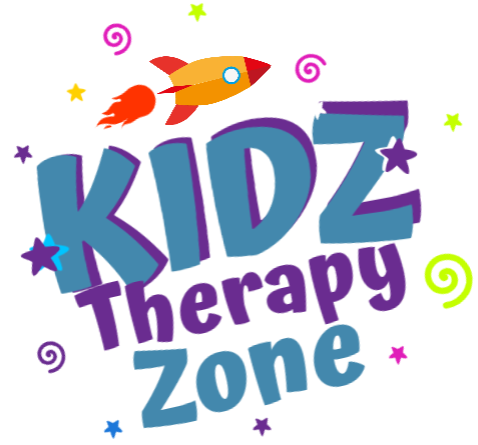Providing children with special needs the right educational tools is crucial for their development, both academically and socially. Whether you’re supplementing school lessons, creating a dedicated home learning space, or embarking on a homeschooling journey, having the right resources makes all the difference. This blog post explores some of the best educational apps and programs designed for children with special needs, tips for creating an ideal home learning environment, and advice for parents who are homeschooling.
Best Educational Apps and Programs for Children with Special Needs
Technology has opened up a world of possibilities for all learners, especially children with special needs. Educational apps and programs can help support their learning in ways that traditional methods may not always accommodate. Here are some of the best tools available:
- Endless Reader (iOS, Android): Endless Reader is a fun, interactive app designed to teach children how to read sight words. It uses adorable monster characters to engage children in a stress-free, playful way. The app is especially helpful for children with Autism, as it offers visual and auditory cues to reinforce learning.
- Proloquo2Go (iOS): A highly recommended communication app, Proloquo2Go is an augmentative and alternative communication (AAC) tool designed for non-verbal children or children with limited speech abilities. It allows children to express themselves using symbols and text-to-speech features, giving them a voice.
- Starfall (Web, iOS, Android): Starfall is a fantastic, multi-sensory learning platform for younger children. It offers games and interactive content on topics like math, reading, and phonics. The visual and audio-based content is great for kids with learning disabilities or attention challenges.
- ABCmouse (Web, iOS, Android): ABCmouse is a comprehensive educational platform covering reading, math, science, and art. Designed for children ages 2 to 8, it offers adaptive lessons tailored to your child’s learning pace. ABCmouse’s interactive lessons can keep children with special needs engaged, especially those who thrive in a structured, visual learning environment.
- Todo Math (iOS, Android): For children who need extra support in math, Todo Math provides accessible math games designed with special needs in mind. The app offers features like extra visual aids, guided play, and progress tracking. It’s an excellent tool for children with dyscalculia or other math-related challenges.
- Autism Learning Games: Camp Discovery (iOS, Android): Specifically designed for children on the Autism spectrum, Camp Discovery uses Applied Behavior Analysis (ABA) principles to teach important skills such as matching, sorting, and identifying emotions. The app is easy to use and offers a variety of fun, educational activities.
- Choiceworks (iOS): Choiceworks helps children with Autism, ADHD, or other developmental delays by teaching them to manage their daily routines and emotions. The visual schedule and task board help children stay organized and focused, making it easier to follow a structured routine.
Creating a Home Learning Environment
Whether your child is homeschooled or attending school, having a home environment conducive to learning is essential. Here are some tips to create a learning space that meets the needs of children with special needs:
- Designate a Quiet Learning Space: Choose a specific room or area in your home that can be designated for learning. Make sure it’s a quiet, distraction-free zone where your child can focus. If possible, set it up away from high-traffic areas like the kitchen or living room.
- Sensory Considerations: Many children with special needs, especially those with Autism or Sensory Processing Disorder, benefit from sensory-friendly spaces. Use calming colors, soft lighting, and minimal décor to reduce overstimulation. Incorporate sensory tools like fidget toys, weighted blankets, or sensory bins to help your child stay calm and focused during lessons.
- Accessible Learning Materials: Keep all educational materials within easy reach. Use clear storage bins or drawers labeled with pictures or words to organize supplies like books, puzzles, manipulatives, and writing materials. This will foster independence and help your child feel more in control of their learning environment.
- Visual Schedules and Timers: For children who thrive on routine, visual schedules can be a lifesaver. Post a daily schedule with pictures or icons to help them understand what to expect throughout the day. Use timers to help transition between activities, giving them clear cues for when to start and stop.
- Incorporate Breaks and Movement: Sitting for extended periods can be challenging for any child, but especially for those with ADHD or sensory needs. Build regular breaks into your child’s day to allow for movement. You can create a “calm-down corner” where your child can relax during breaks, or let them engage in physical activities like stretching or jumping on a trampoline to help regulate their energy levels.
- Incorporate Technology Thoughtfully: If your child uses apps or online programs, make sure that screen time is purposeful and not overwhelming. Balance technology use with hands-on learning activities like crafts, puzzles, or outdoor play to ensure a well-rounded educational experience.
Tips for Homeschooling Children with Special Needs
Homeschooling can be an excellent option for families of children with special needs, as it offers flexibility and the ability to tailor lessons to your child’s unique learning style. However, it can also be overwhelming without the right strategies in place. Here are some tips to help you succeed in homeschooling:
- Know Your Child’s Learning Style: Every child learns differently, and children with special needs often have specific learning preferences. Some may be visual learners, while others are kinesthetic or auditory learners. Take time to observe how your child learns best and adapt your teaching methods accordingly.
- Create an IEP or Learning Plan: Just like in traditional schools, an Individualized Education Plan (IEP) can be valuable for homeschool settings. Draft a learning plan that outlines your child’s strengths, areas of need, and specific goals. This plan will help guide your teaching and keep track of progress throughout the year.
- Use Multi-Sensory Teaching Methods: Engage multiple senses in your lessons to enhance learning. For example, use tactile tools like letter magnets for spelling, flashcards for sight words, or visual aids like charts and diagrams for math. Incorporate movement, sounds, and hands-on activities to make learning more engaging and accessible.
- Seek Outside Support: You don’t have to do it all on your own! Many communities offer resources like therapy services, support groups, or co-ops for homeschooling families with special needs children. Therapists such as speech, occupational, or physical therapists can also support your homeschooling efforts by providing targeted interventions for your child’s unique challenges.
- Set Realistic Expectations: Homeschooling a child with special needs requires flexibility and patience. Some days may go smoothly, while others might not. Set small, achievable goals for each day or week to avoid overwhelming yourself or your child. Celebrate progress, even if it’s slow, and remember that learning happens at different paces.
- Incorporate Life Skills: In addition to academics, focus on teaching practical life skills like personal hygiene, money management, cooking, and household chores. These essential skills are important for fostering independence and preparing your child for adulthood.
- Use Adaptive Curriculum: When homeschooling a child with special needs, finding curriculum materials designed for different learning abilities is key. Explore resources specifically for special education, such as Boardmaker, Learning Ally (for audio-based learning), or TouchMath (for math concepts).
Conclusion
Providing children with special needs the right educational resources and tools is essential to their growth and development. Whether you’re using apps and programs to support learning, creating a sensory-friendly learning environment at home, or homeschooling your child, having the right strategies and tools in place makes the journey easier. Remember, every child is unique, and with patience, flexibility, and the right resources, you can help your child thrive in their educational journey.

